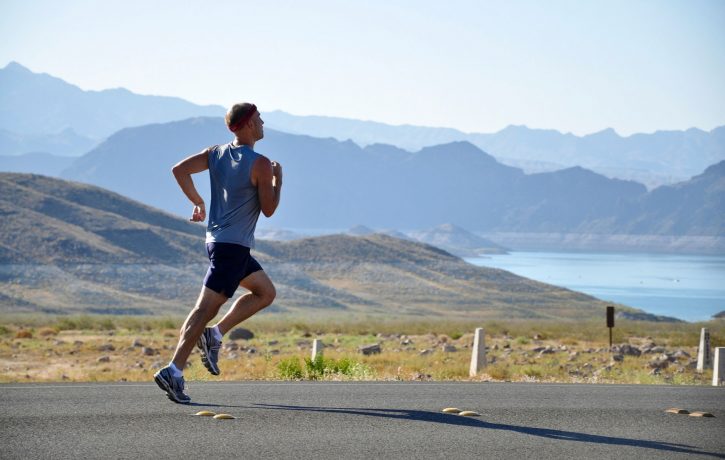Forefoot Running or Heel Striking?

The debate is ongoing as to whether forefoot running is better for the body than heel striking.
The evidence has all pointed to forefoot or barefoot running being both more efficient and reducing the risk of injuries but studies of athletes at Olympic trials demonstrate that these elite class athletes have a variety of foot strikes from a solid heel strike to the debated forefoot strike.
Humans evolved running for the hunt or escaping predators and this was done without the aid of comfy shoes, however, I argue that they did not do it on solid concrete pavement.
Since the development of the modern running shoe in the 1970’s children are growing up with the ability to run and land on their heels because of the padding the sole of the shoes provide.
A study looking at people that developed without running shoes, i.e. barefoot, did not heel strike when running. Does this demonstrate that had we not learnt to run in padded shoes we would all have developed a forefoot strike?
This appears valid, however, we go back to the argument that we have plenty of elite runners running perfectly efficiently with a heel strike, so does it really matter?
Why may forefoot running be better for our health?
If you think about the way we walk downstairs, the ball of the foot touches down before the heel. Functionally this is the ankle and rear foot joints acting like shock absorbers and reducing stress to both the knee and the hip, and ultimately the lower back. This is the same with a forefoot running gait.
Those who heel strike remove this shock absorption and transmit forces directly to the knee, which is likely either completely or near fully extended. The body weight is therefore compressed fully into the knee joint which is then transmitted to the hip and low back.
A study that looked at force generation with different gait styles found that in forefoot runners the magnitude of force went up and down smoothly ( appealing) whereas in the heel-strikers there was a sudden upward spike (Not so good). It is this level of force that is felt to be the root of most running-related injuries.
But just switching to a minimalist shoe may not be the answer. Changing styles after years of running a certain way may cause just as many problems as the body tries to adapt to the different muscular and joint stresses
So what is the answer?
Basically, if your heel strikes and you do not suffer from regular injuries it is just as well to continue as you are. However, if you are regularly prevented from running due to persistent injury and pain, changing to a forefoot running gait could be the answer to your prayers, just get the right advice and support before you rush into it.
- Using Self-Talk to Boost Self-Confidence - 5th April 2024
- Simple Techniques for Recharging Amid a Hectic Schedule - 28th March 2024
- Letting Go of Material and Emotional Baggage - 12th March 2024
-
Pingback: Focusing on the 2015 London Marathon
-
Pingback: How to Recover from a Marathon : 7 Top Tips
-
Pingback: Running Gait and Its Relation to Injuries
